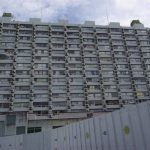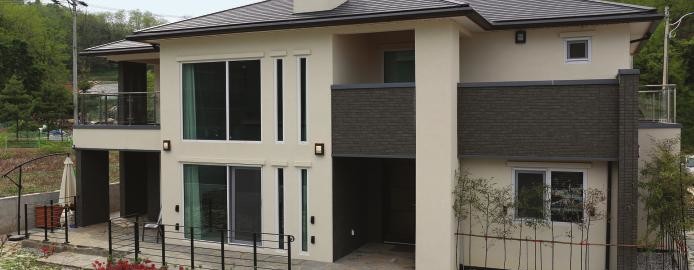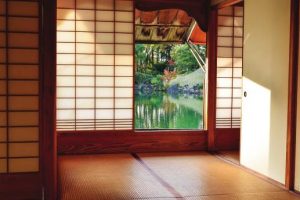Three Misconceptions about Japan’s Properties
Japan’s attractive property market draws real estate investors worldwide for its high yield, affordability, rental income cash flow and safe haven economic environment. While the real estate investment arena is undoubtedly attractive, and the second largest real estate investment market in the world, Japan is also one of the countries most affected by natural disasters. Therefore, before jumping in to buy up properties, foreign investors, new to the market, often test the waters by asking about the quality of Japan’s structures and their ability to weather the storm. Investors ask, “What is the risk associated with the age of Japan’s real estate?” To answer this question, we explore the common misconceptions of Japanese properties.
Misconception #1 – Properties are Made of Wooden Structures
Some investors have concerns about the materials used to build real estate in Japan and whether or not they can withstand the force of earthquakes and tsunamis. This misconception stems from traditional wooden houses which used to line the streets of Japan in the former imperial capital. Most investors focus on buildings for the cash-flow play, rather than houses. Therefore, the concern is an out-dated concept and no longer a consideration. Furthermore, wooden houses are being steadily replaced by earthquake-resistant, reinforced concrete apartment blocks.
Misconception #2 – Properties Built after 1981 Pose Less Risk
In 1981, the Building Standards Law was revised to protect residential and commercial structures against earthquakes. In 2006, building certificates and inspections became even more regulated subjecting builders to inspections during the construction process for buildings above three stories. Because of the revisions to the Building Standards Law in 1981, some investors consider 1981 the turning point for sounder structure. Herein lies another misconception.
 A building’s condition is affected by more than just its age. A properly managed accumulated funds pool can also affect its condition. With adequate funds, buildings built prior to 1981 can be retrofitted to bring them up to code by regularly renovating, repairing and re-strengthening exterior walls and taking care of unforeseen renovations. Alternatively, a newer building could be poorly managed with insufficient funds for renovations and maintenance. As you can see, investing in an older building under these circumstances could be the wiser choice to minimize risk.
A building’s condition is affected by more than just its age. A properly managed accumulated funds pool can also affect its condition. With adequate funds, buildings built prior to 1981 can be retrofitted to bring them up to code by regularly renovating, repairing and re-strengthening exterior walls and taking care of unforeseen renovations. Alternatively, a newer building could be poorly managed with insufficient funds for renovations and maintenance. As you can see, investing in an older building under these circumstances could be the wiser choice to minimize risk.
As facilitators to foreign investors, we try not to source anything older than 1973. But, those that we did source were well-maintained buildings housing 50 to 200 units, showing no signs of deterioration, beyond normally acceptable and repairable wear and tear. Generally, since the cost for renovations and repairs are taken out of the building repair fund, if funds are insufficient, then apartment owners bear the extra costs. To ensure the risk to investors is minimal, when conducting due diligence on a potential purchase, we look into the status of the accumulated funds pool, renovation/repairs/maintenance history and the building management company’s handling of the collected renovation/repair funds and provide a report to the investor for an educated investment.
Misconception #3 – Properties have Just a 20 Year Life-Span
Life-span of a house is sometimes referred to as approximately 20 years, while that of a building approximately forty years. From a value perspective, this is a misconception. This life-span refers to tax depreciation not the quality of the property.
There are other benefits to an apartment investment over a house. Houses require more maintenance and can present unexpected costs, whereas, in a building, structural expenses are known in advance and covered by pre-set building fees. And, the building management company’s monthly fees normally cover all or most maintenance expenses, so there are far less surprises.
Overall, risk is greater with speculative play for capital gain such as units in Tokyo or Osaka. Investing in Japan for its monthly cash flow environment in cities such as Sapporo, Fukuoka, Nagoya and other cities with stable or growing population can result in stable returns. For highest yielding properties, investors should focus their criteria on condo units under 200 sq. ft., one to two room units, for inexpensive interior maintenance. Alternatively, some of our clients aim for smaller and older buildings on large plots of land in key locations. The strategy in this case is to sell to a developer when the building becomes too expensive to maintain, in exchange for either compensation at a profit, or a new unit in a new residential project built on that land. The downside is that these units only have a small fraction of land attached to them, so appreciation potential is lower.
Priti Donnelly, Sales and Marketing Manager, Nippon Tradings International, [email protected]
Priti Donnelly
 Priti Donnelly is the sales and marketing manager at Nippon Tradings International, a proxy and buyers’ agency representing foreign investors with purchasing, selling and managing real estate in Japan. She understands the importance of transparency in today’s international market. Through her insight, she focuses on breaking barriers and helping investors feel confident about their overseas property investments.
Priti Donnelly is the sales and marketing manager at Nippon Tradings International, a proxy and buyers’ agency representing foreign investors with purchasing, selling and managing real estate in Japan. She understands the importance of transparency in today’s international market. Through her insight, she focuses on breaking barriers and helping investors feel confident about their overseas property investments.
Phone: +1 226 336 4097 / +81 3 4520 9262
Email: [email protected]
Website: http://www.nippontradings.com






